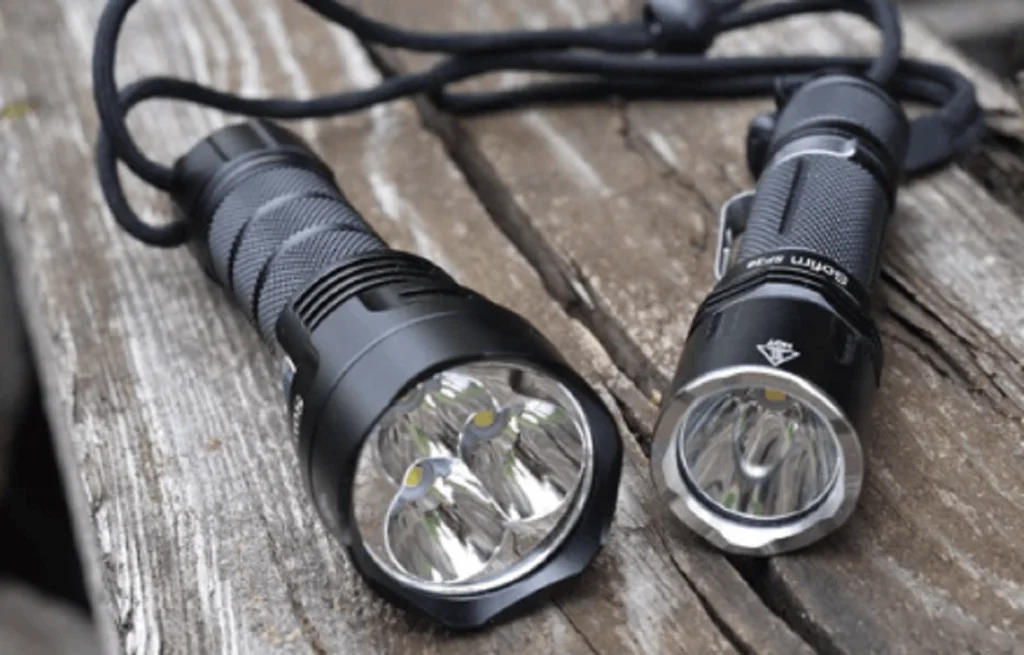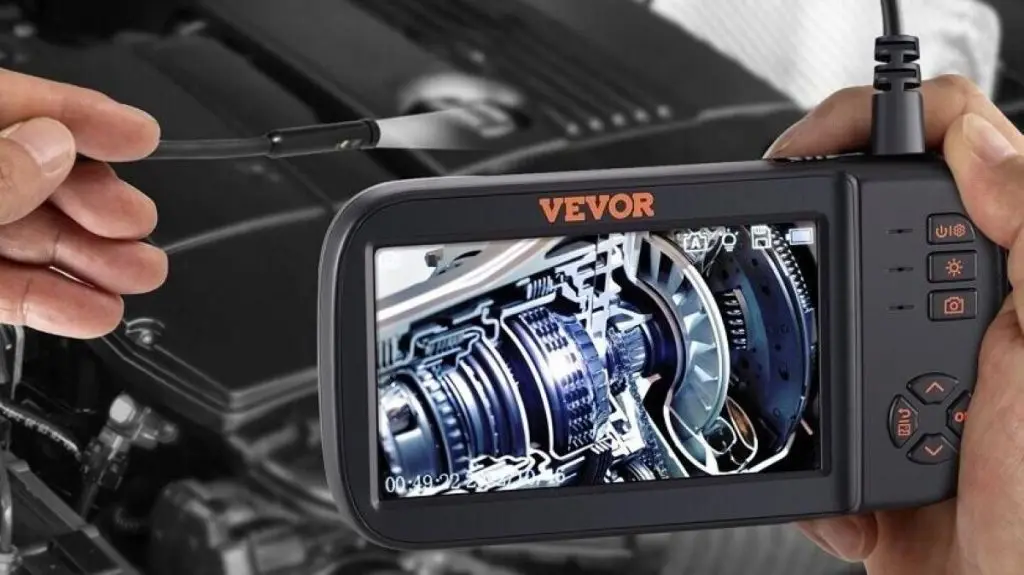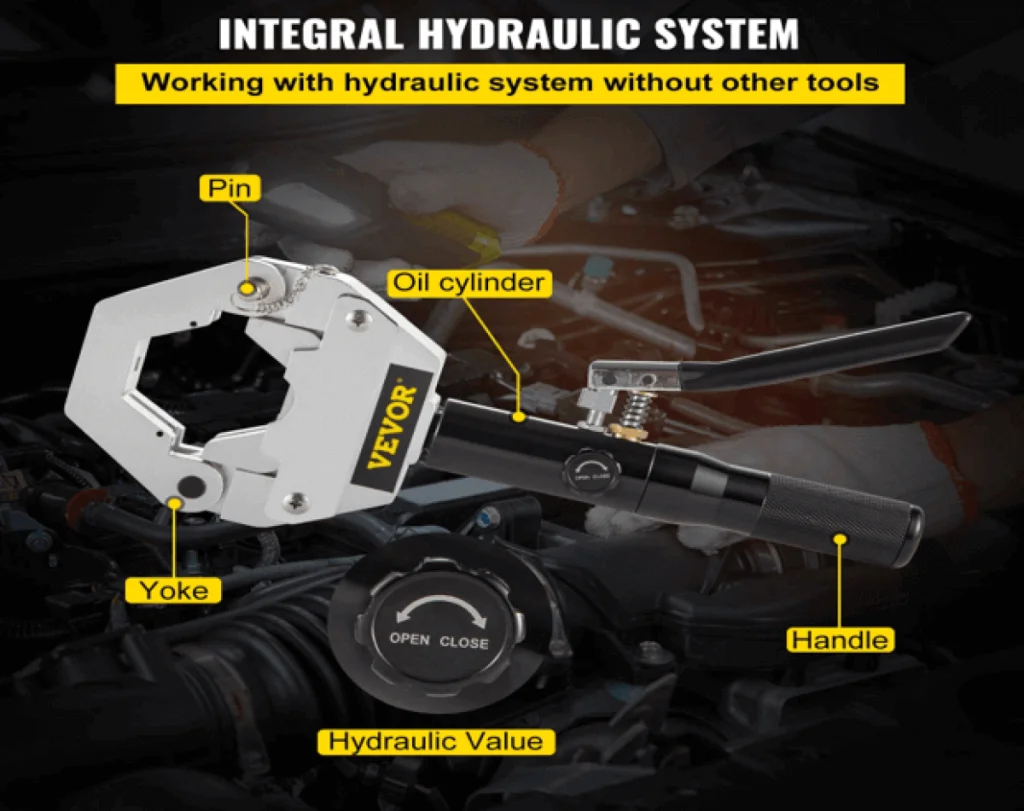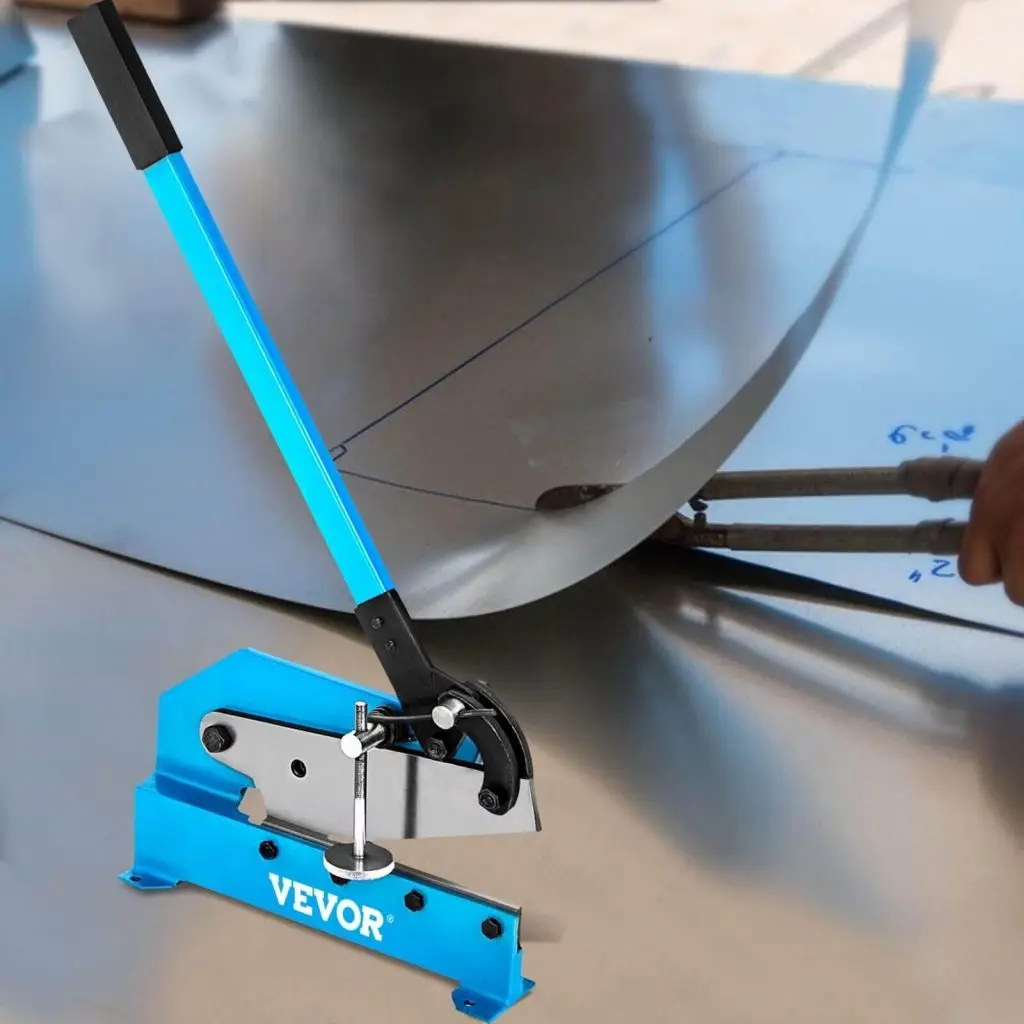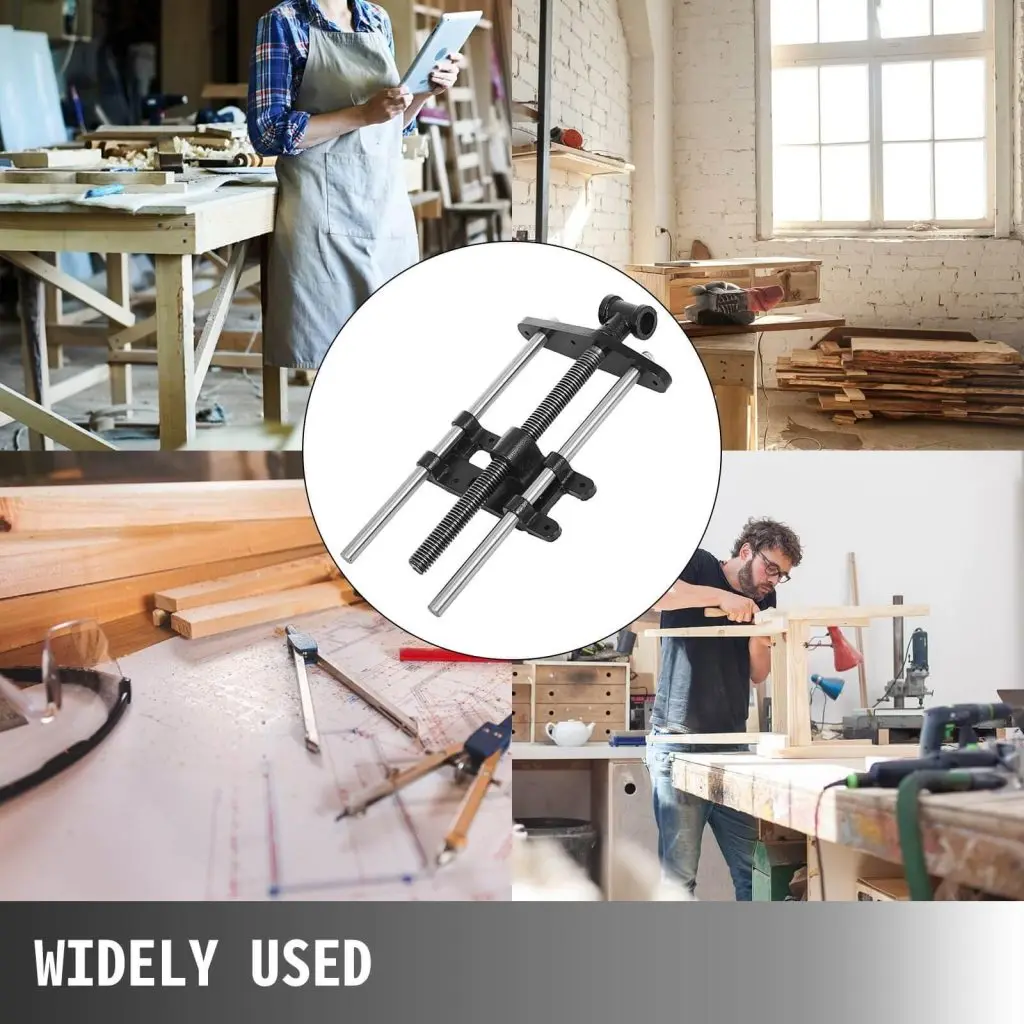Flashlights. Everyone has probably used them a couple of times in their lifetime. There’s no denying how indispensable flashlights are both indoors and outdoors.
Whether you’re going for a beautiful camping trip under the stars or preparing a backpack for emergencies or unexpected power outages, flashlights are a must-have.
Because of how important they are, there are so many types of flashlights to choose from, and you can easily make the wrong choice if you’re not careful. Luckily, this guide is here to help.
Are you trying to decide which flashlight is best for you? You’ll get your answer just by reading this guide.
We’re going to discuss everything you need to know to make the perfect choice.
Table of contents
Understanding Flashlight Fundamentals
The key to making a good pick from the different types of flashlights out there lies in understanding the fundamentals that make up a good flashlight.
You must understand terms like lumen and candela to properly assess all the different flashlight battery options you have. Let’s discuss these points in detail below.
Lumens vs. Candela: Unveiling the Mystery of Flashlight Brightness
A flashlight typically consists of a lamp or light source, lens, switch, reflector, batteries, and casing that houses all these different parts.
The most important part of the flashlight, which is the light source, is usually an incandescent bulb or an LED (light-emitting diode), which emits brightness measured in lumens and candela.
In order to make the right choice, you must also understand the difference between lumens and candela and how they play a role in the different kinds of flashlights.
- Lumen: A lumen is simply the measurement of light output that tells you how strong or weak a light source is. It is typically measured with the letter, “L” and the higher it is, the greater the area of illumination.
For example, one lumen is roughly the amount of light emitted by a birthday candle, while a standard light bulb emits about 500 Lumens. So, a low source of lighting, like a nightlight or backlight, will typically be less than 150 lumens.
If you’re looking for everyday indoor tasks, look out for one with about 500 lumens. On the other hand, a flashlight for hiking at night, camping or fishing should emit between 500 and 3000 lumens.
- Candela: While a lumen measures the amount of light emitted by a flashlight, a candela measures the intensity of light. So, candela refers to the amount of light generated from a light source in a single direction.
A candela is denoted by “cd” and one candela equals 12.57 lumens. When making a choice among the different types of flashlights (which we’ll be discussing shortly), you must also consider their Candela value.
This is because your flashlight will be used to illuminate focused areas at a time. As such, you need a flashlight with a good candela value.
Exploring Flashlight Battery Options
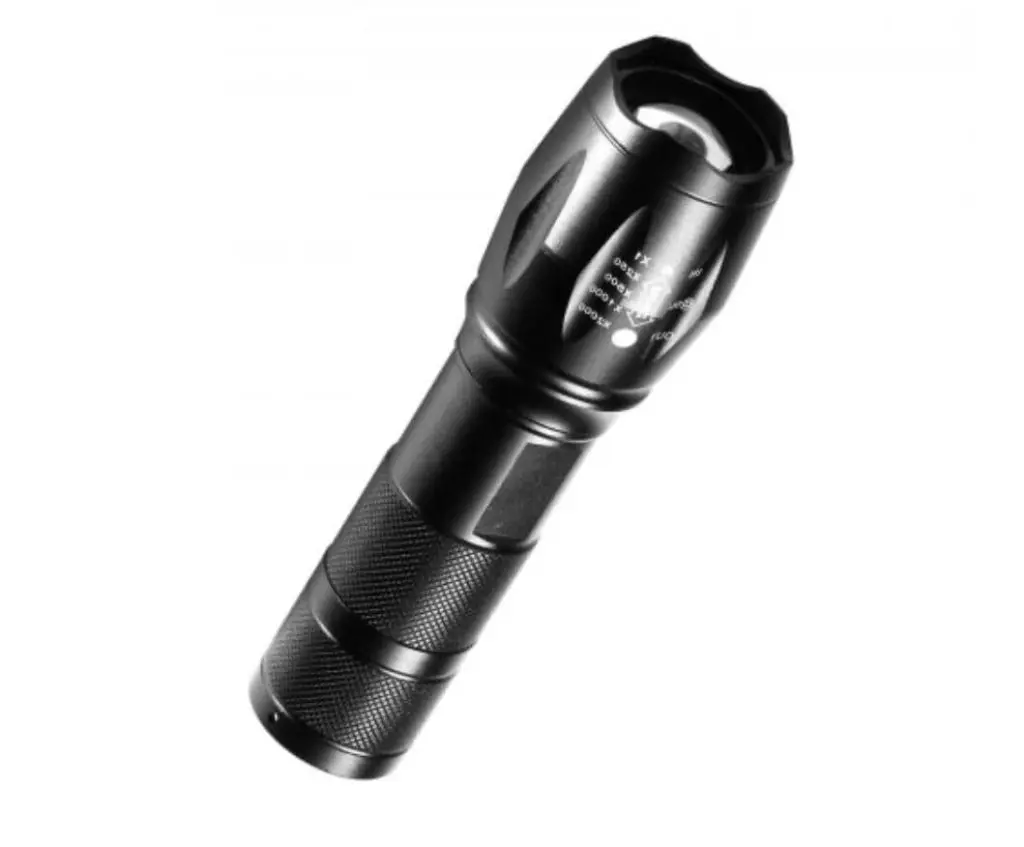
As you make your pick, you must also look at the different flashlight battery options, as they play a huge role in how long your flashlight will last. Different types of flashlight typically have different types of batteries, including:
- Alkaline Batteries: These are some of the most common batteries. They are also relatively cheaper than other types of batteries. However, keep in mind that they tend to leak and they have a shorter lifespan.
- Lithium Batteries: Lithium ion batteries make a good choice because they are equipped with a USB charger system, which means they are rechargeable. They’re a great choice for outdoor activities because all you need to do it connect to a power source to recharge and you can enjoy illumination even when power is out. They’re often built-in to the flashlights so you cannot take them out.
- Disposable Batteries: These are flashlight batteries that are only good for one use. They are mostly alkaline batteries that cannot be recharged and must be replaced once they run out of juice.
- Crank Batteries: These are batteries that can be powered by a crank or shaft manipulated by human effort. While this is not one of the more common choices of flashlight batteries, crank batteries are great for emergency kits. They are not very practical due to the mode of power. However, you can save them for emergencies because you don’t have to worry about the lifespan of the battery.
Types of Flashlights: Choosing Your Perfect Beam
With the knowledge of lumens, candela, and the different types of flashlight batteries, you can easily make a choice of the type of flashlight to use. Let’s discuss the different kinds of flashlights in detail.
Pocket-Sized Flashlights for Everyday Tasks
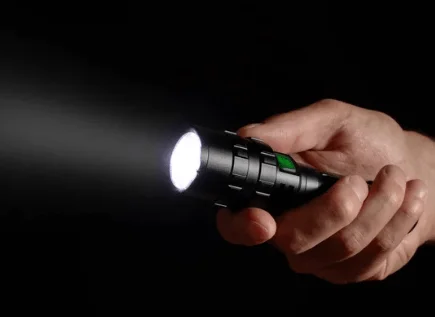
As the name implies, these are pocket-sized flashlights that are lightweight, compact, and easy to carry around. They include keychain flashlights and penlights.
Pocket-sized flashlights are also called consumer flashlights because they are perfect for everyday household tasks or repairs. They are designed for minor household needs such as finding your keys, illuminating a dark corner, or reading at night.
Pocket-sized flashlights often use alkaline A or AA batteries because they are not designed for extensive use. Therefore, you will have to carry out regular maintenance by changing the batteries often. When this flashlight is not in use, it is best to keep the batteries out, or it may leak with time.
Mid-Size Flashlights for All-Purpose Use
Next on the list of types of flashlights is mid-size flashlights for all-purpose use. These are flashlights that are a little bigger in size and capacity than pocket-sized flashlights but not up to the capacity of high-intensity flashlights.
These types of flashlights strike a functional balance between portability and power. They may not be as small as pocket-sized flashlights, but they can be handheld.
This makes them a great choice if you’re looking for something that will work well in any situation—both indoors and outdoors. These are the kind of flashlights you use to walk your dog at night or carry out more complex house repairs. They’re versatile enough for just about any situation.
Headlamps for Hands-Free Exploration
Another type of flashlight worthy of mention is headlamps which are perfect for hands-free exploration.
Unlike the previously mentioned types of flashlights, which are handheld, headlamps provide more room for hands-free exploration because they can be attached to the head using a strap or band.
You can use headlamps when you’re doing an activity that requires the use of both hands, which could be running, fixing things around the house, or working in dark spaces. They’re often equipped with adjustable straps and tilt mechanisms that allow you to provide optimal lighting at specific angles.
Rugged Flashlights for Extreme Conditions
If you’re looking for types of flashlights that are built to withstand harsh environments and are ideal for outdoor adventures, rugged flashlights are the way to go.
These types of flashlights are often waterproof and shock resistant. They are also typically made from durable material like anodized aluminum and have high water resistance ratings of at least IPX4.

This means that if you use them in heavy rainfall, mistakenly submerge them in water drop them on rough terrain, or from certain heights, they will still work just fine.
Most rugged flashlights are made with tactical bezels made of aluminum or stainless steel and designed with jagged edges. This means they can serve two purposes– illumination and self-defense.
Flashlights for Camping and Hiking
These are flashlights that are designed for outdoor activities such as camping or hiking. Going camping often means that you’ll be cut off from electricity for a couple of hours or even days depending on the length of your trip.
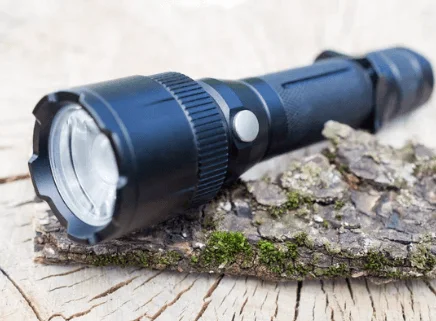
Therefore, when you’re picking types of flashlights for camping or hiking, look out for those that have long battery life spans or are rechargeable. This is essential as it keeps you from having to frequently change your batteries while you’re outdoors.
These types of flashlights often come in models that also offer USB recharging ports or solar charging panels. This makes them fit for camping trips that may stretch on for multiple days.
Tactical Flashlights
Tactical flashlights are types of flashlights that are engineered to meet the needs of extreme conditions. They are often equipped with high-lumen output, versatile strobe modes, and long-range visibility.
These flashlights often have lumens exceeding 1000, and they provide intense brightness that can illuminate wide areas at a time or blind potential threats. They are popular choices among law enforcement, military, and personal security personnel.
Tactical flashlights are built for survival, so they may have survival tools attached to them. This includes fire starters, glass breakers, compasses, and other outdoor survival essentials.
High-Intensity Discharge (HID) Flashlights
There are two major features to look out for with high-intensity discharge flashlights: exceptional brightness and long-range illumination. They are usually made with xenon gas and metal halide salts, which enable them to provide an intense, bright light more powerful than LED lights.
These types of flashlights are larger and heavier than other flashlight models, and they often have long-lasting power. They made an ideal choice for long outdoor adventures where you may not have access to electricity for extended periods.
Choosing the Flashlight That Works Best for You
From the long list of types of flashlights listed above, how do you know which is best? Here are some factors to consider.
Light Output (Lumens)
One of the first considerations you must look at is light output and number of lumens because it tells you the amount of illumination you would be getting from your flashlights.
For everyday tasks, use flashlights with lower lumens. However, extended outdoor activities would require higher lumens of 500 and above.
Beam Pattern
Consider the beam pattern your flashlight provides. Check whether it is floodlight (wide and short-range) or spotlight (narrow and long-range).
Floodlights work best for illuminating a wide area at a time, while spotlights are best for more intense, focused long-range visibility.
Battery Life and Type
You must also consider how long your flashlight battery can last. You can choose rechargeable options for frequent use and eco-friendliness.
On the other hand, disposables are better for occasional use because you can easily toss them out once you are done with them.
Durability
Finally, you must look at the level of durability your flashlight provides. If you’re going to be using it for outdoor purposes, consider its IPX rating. A high IPX rating means your flashlight is considered durable according to ingestion protection standards.
A flashlight with a rating of IP67 can resist water for at least 30 minutes. Therefore, if you plan to spend most of your time outdoors in rainy conditions, opt for a flashlight with a higher rating.
Unveiling VEVOR Flashlights: Power Up Your Potential
The best flashlights are those that can easily combine functionality with durability. With VEVOR’s flashlights, you can get access to an impressive collection of flashlights that are versatile and durable enough for any occasion, whether indoor or outdoor.
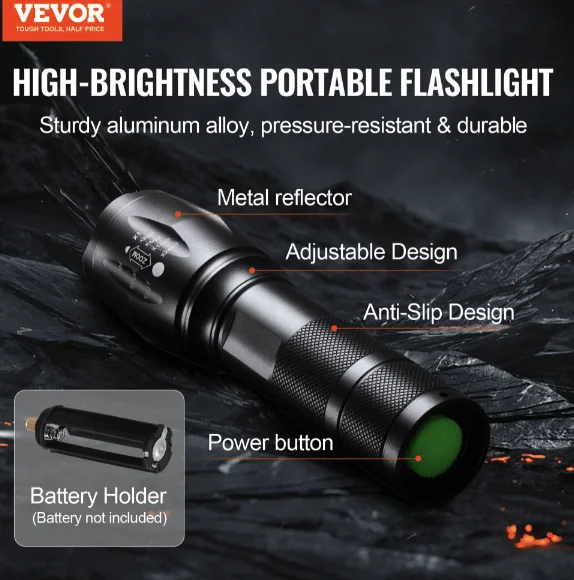
For one, VEVOR offers a multifunction flashlight with a bright floodlight of up to 3000 high lumens. It offers high, medium, and low strobes and can be easily adjusted to earthier a flood beam or a spot beam with over five mode adjustable focuses.
VEVOR flashlight is best for outdoor activities due to its highly durable material made of waterproof material and aluminum alloy. Even with its high capacity, it is quite easy to carry around, and it is compact enough to fit in your pocket, bag, or car compartment.
If you’re looking for a flashlight with a higher capacity than 3000 lumens, VEVOR still has you covered. The VEVOR 10000 Lumen flashlight offers illumination from up to 1700 feet away. It is equipped with a 2200 mAh battery that supports 5 to 10 hours of illumination with ease. It also shows you how much battery life is left in percentages so you can plan ahead of time. Pretty convenient, isn’t it?
FAQs about Different Types of Flashlights
What are some essential features to consider when choosing a flashlight?
Before you choose a flashlight, consider the following:
- Consider the number of lumens it provides. Lumens of up to 500 work best for indoor use, and lumens of over 500 work best for outdoor use.
- Look at the beam pattern. Choose floodlights when you want to illuminate a large area and spotlights when you want more focused lighting.
- Consider the battery life. Rechargeable flashlights are best for frequent use, and disposable batteries are best for occasional use.
- Consider the durability too. A good flashlight should be able to withstand harsh environments including rain, and rough terrain.
How do I properly care for and maintain my flashlight?
You can maintain different types of flashlight by:
- Taking the removable batteries out when the flashlight is not in use
- Keep it from moist, damp environments
- Remove dust, dirt, and stains before use
What type of flashlight is best for camping and hiking?
If you’re in search of flashlights for camping and hiking, go for durable flashlights like the VEVOR 10000 lumen flashlight built to withstand harsh weather elements. You can also go for headlamps, rugged flashlights, and tactical flashlights.
What do the different IPX water resistance ratings mean for flashlights
IPX ratings refer to the level of durability flashlights offer.
- IPX0 means no protection
- IPX5 means protection from harmful droplets coming from a jet nozzle
- IPX8 means protection from continuous submersion for up to 30 minutes
Conclusion
Flashlights are absolute must-haves for everyday use. Before you choose from the various types of flashlights, ensure you consider the amount of lumens and candela they offer.
You can opt for pocket-size flashlights if you want something suitable for small, household tasks. For more rugged outdoor occasions, go for high-capacity flashlights with above 500 lumens.
With VEVOR’s comprehensive range of flashlights, you can have access to versatile, powerful, and highly durable flashlights built to withstand rough conditions. You can also get VEVOR flashlights with up to 10000 lumens that can shed illumination from up to 1700 feet away.
Looking for durable flashlights for any occasion? Visit the VEVOR website now and make your pick!

